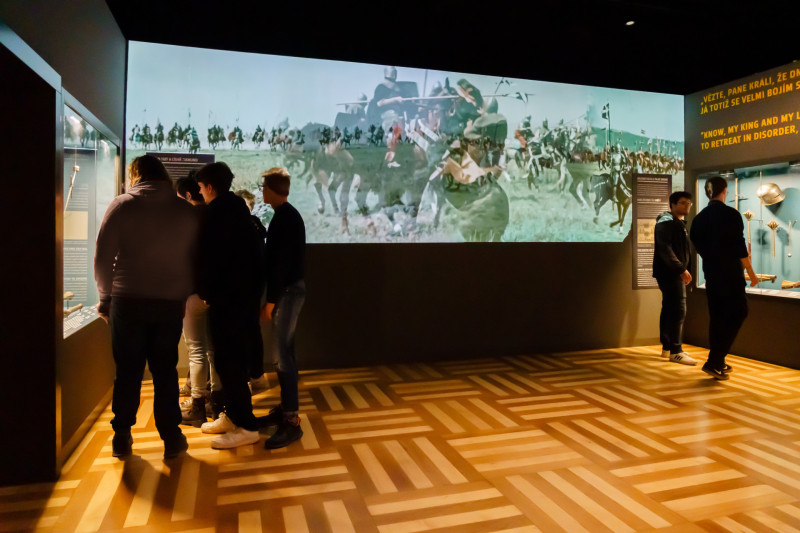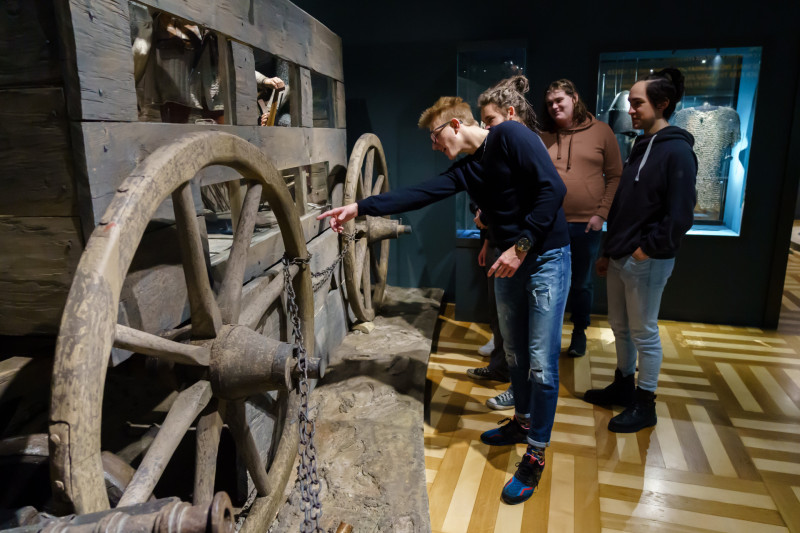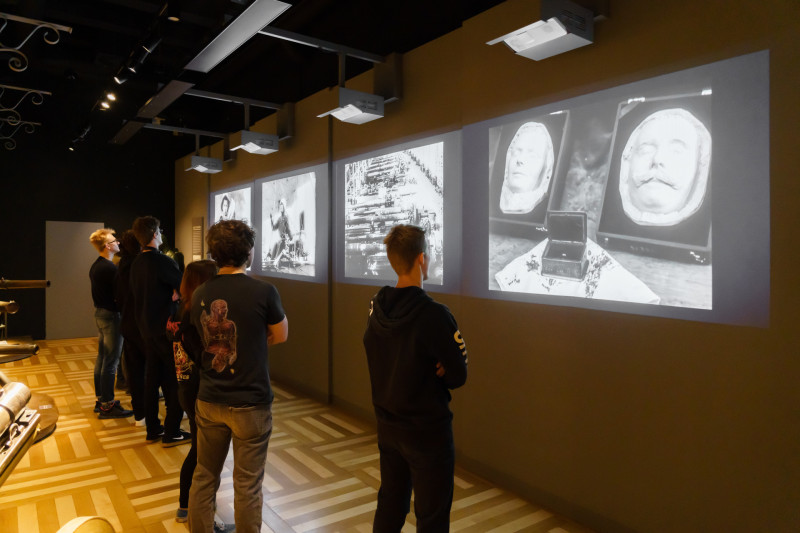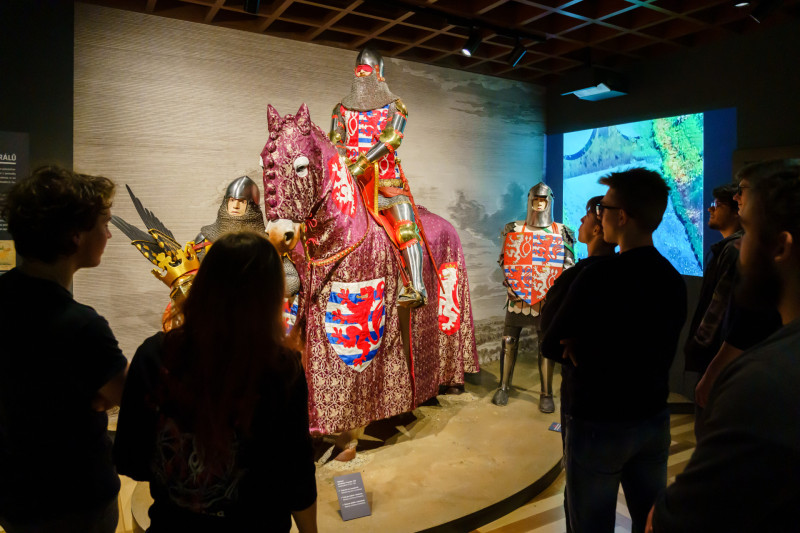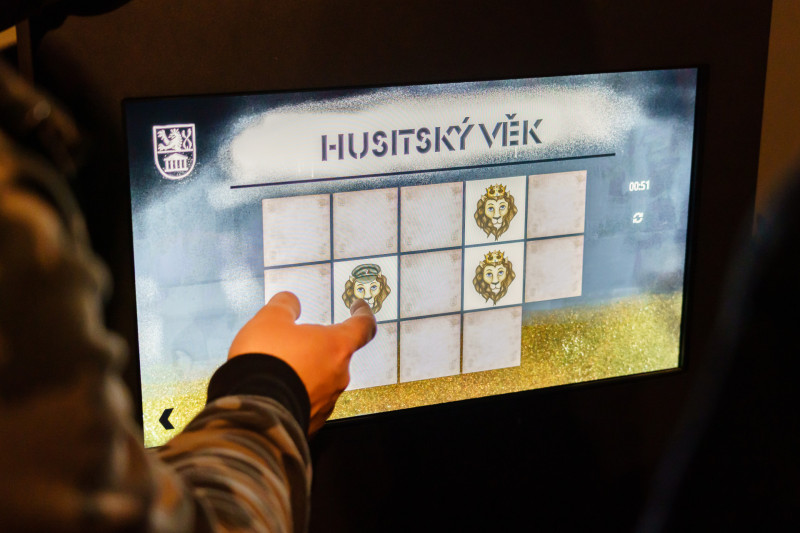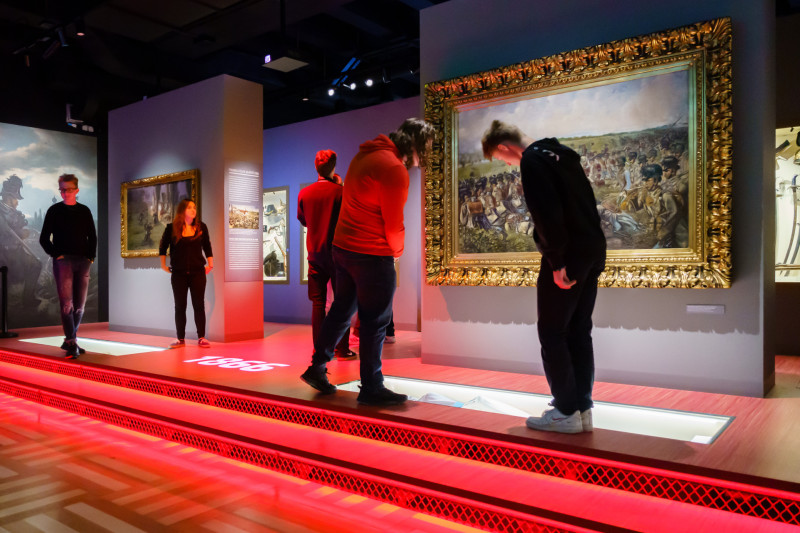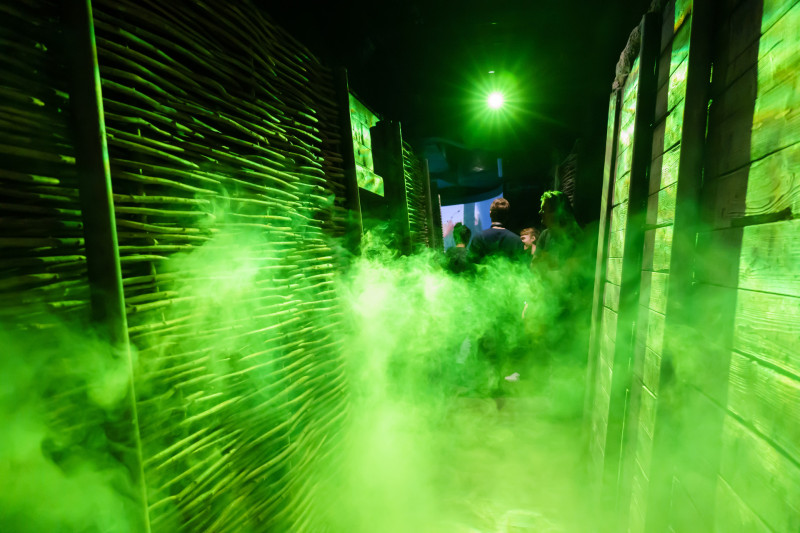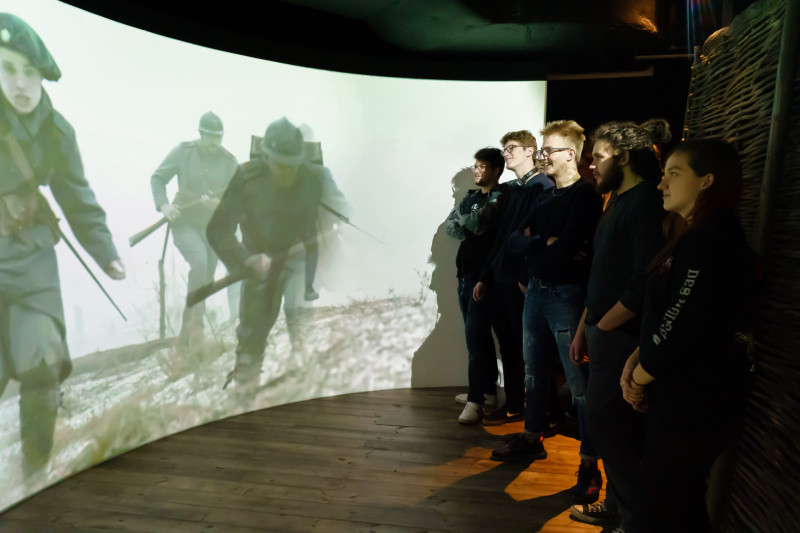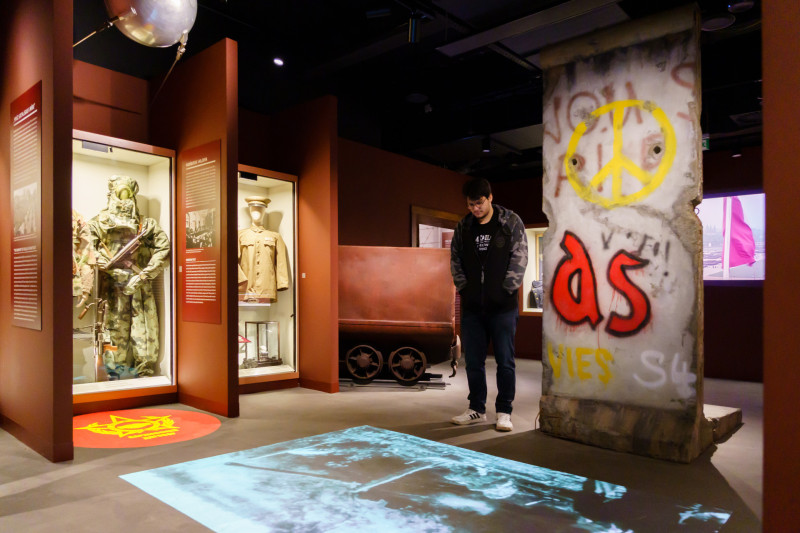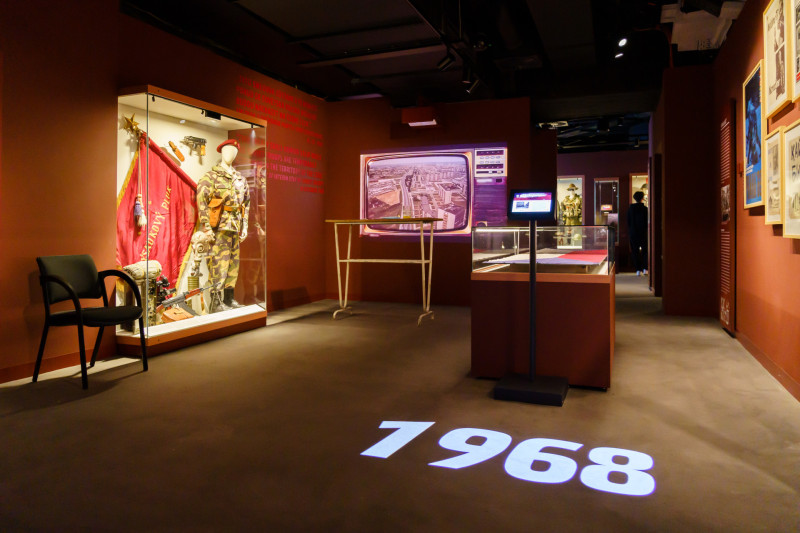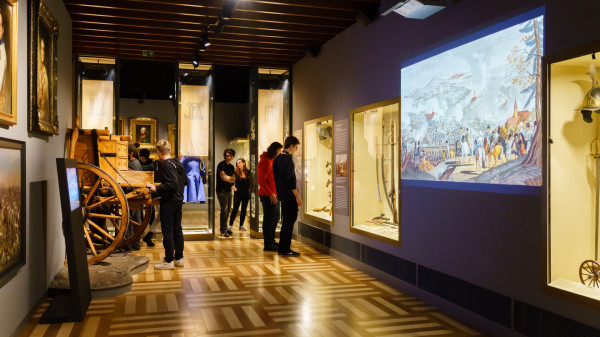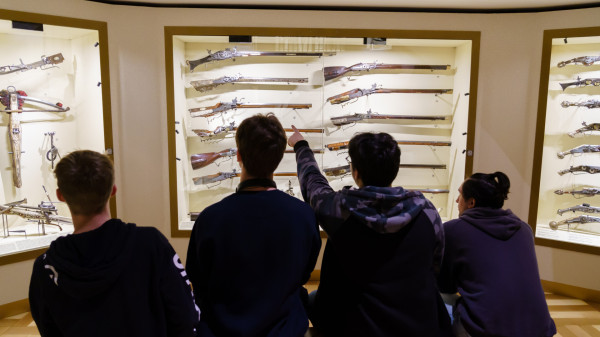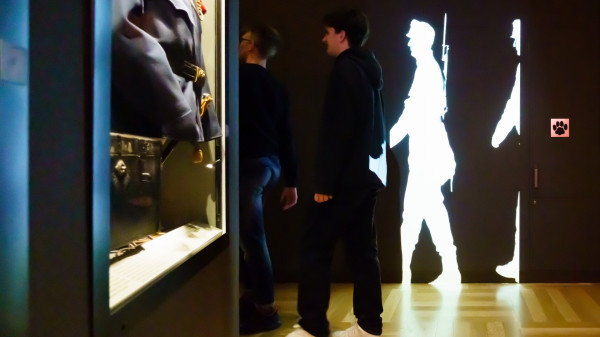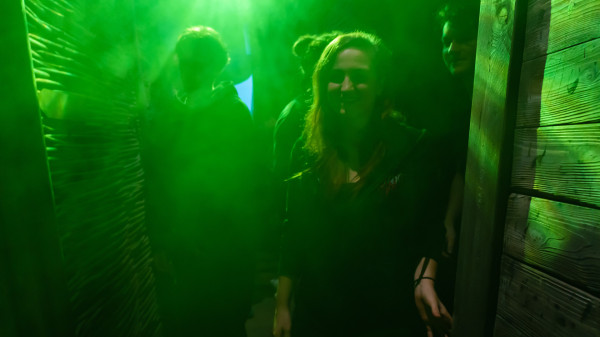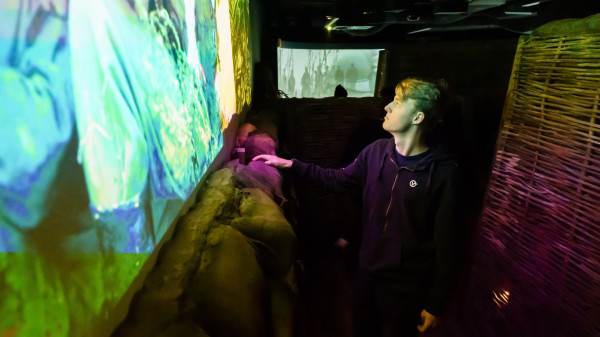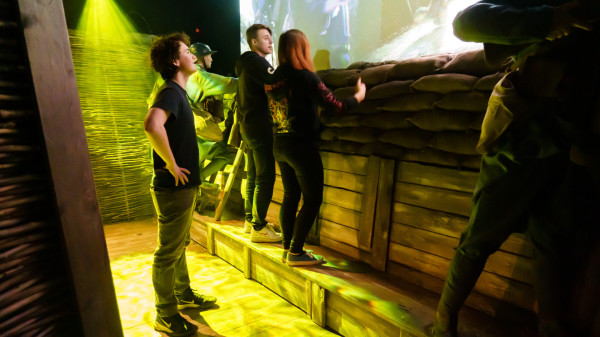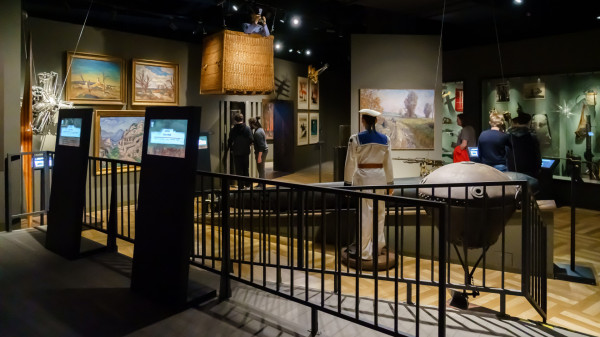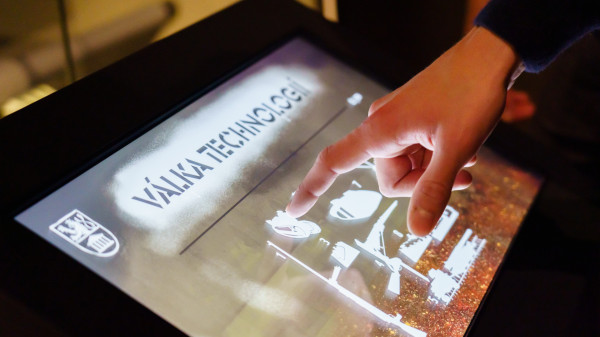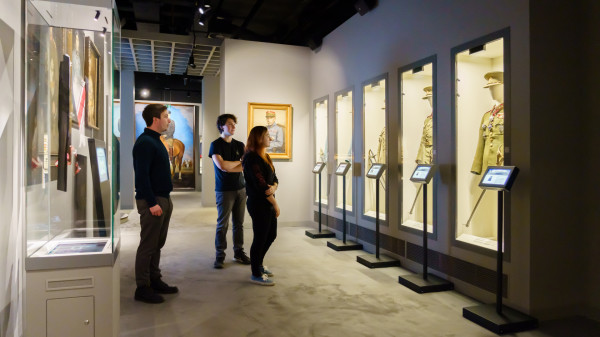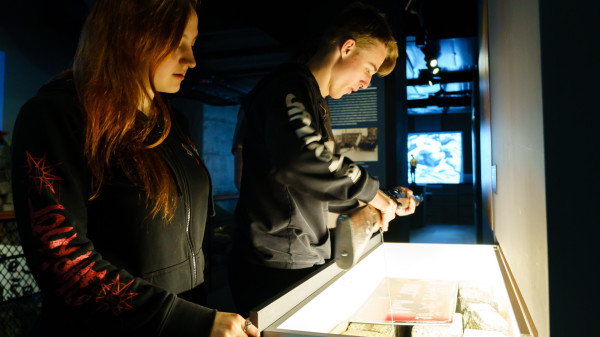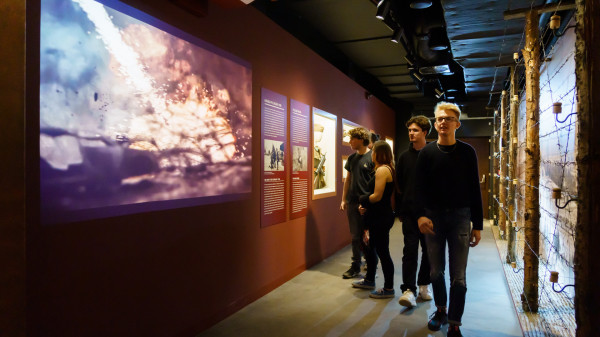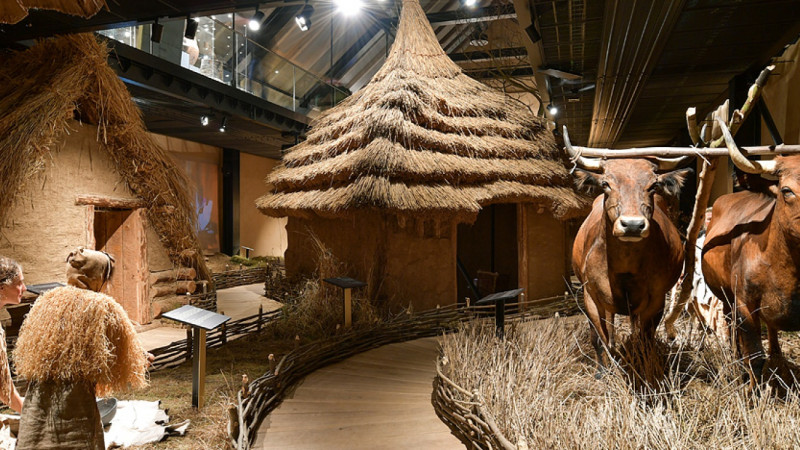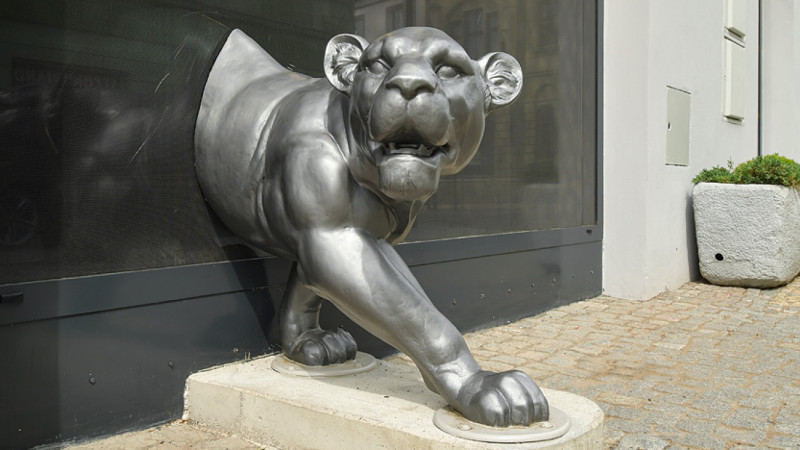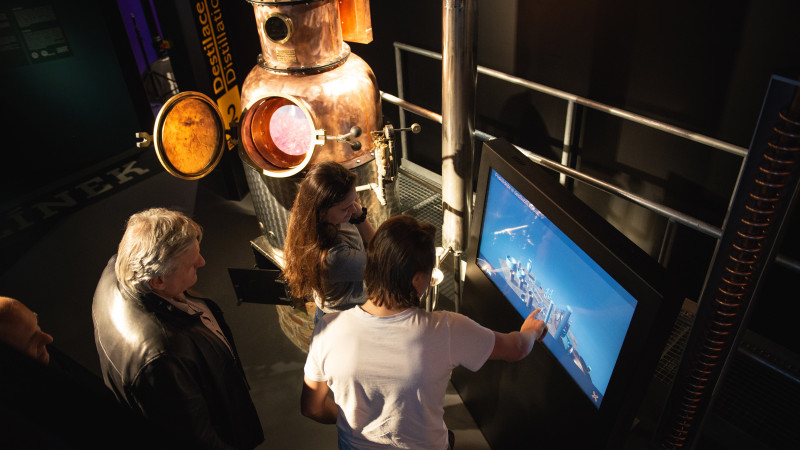
Military History Institute Prague
A multimedia exhibition that ranks among the top in the European museum industry
Army Museum Žižkov has a total of eleven exhibition and display halls covering more than 5,000 square metres, providing a large space to present a diverse range of military exhibits and captivating stories. The latest exhibition, created under the auspices of the Military History Institute, traces the military history of the Czech Republic from its infancy to the present day. It is a multimedia interactive exhibition that combines collectors’ items, documents, photographs and short films presented with the help of modern audio-visual technologies. The application of such approaches is increasingly popular in 21st century exhibitions because they allow visitors to better assimilate the information and events presented.
5000 m2 of new exhibitions on 4 floors
The cancellation of the depositories has made it possible to expand the museum's exhibition space as much as possible and to create new exhibitions that can present a larger part of the collections to the public. The roofing of the museum's hall and the newly built entrance, with visitor facilities in the basement below the hall, have proven to be a great way to optimise the museum's premises and provide greater comfort and convenience for visitors. The exhibition space is now three times larger, which gives the museum more potential to develop its permanent and temporary exhibitions, as well as enables it to put on events that can reach a wider audience. Work on the design of the permanent exhibitions began in 2015, at the same time as the preparation of the project for the reconstruction of the building. Unlike numerous museums, especially those abroad, where a large team, often consisting mainly of freelancers, is created to prepare exhibitions, a small circle of Military History Institute staff was given the task from the very beginning. The key role was entrusted to the curators of the individual museum sub-collections. During 2016, project documentation for the future appearance of Army Museum Žižkov, including the museum exhibitions, was completed. The large-scale reconstruction began two years later. During the 4 years of reconstruction, the intensive preparation of the new exhibitions took place, the results of which started to materialise in 2021 and 2022.
7500 exhibits!
The project combines traditional museum design with modern audio-visual elements. Greater emphasis has been placed on exhibits, as it is artefacts and items from the past that can best bring visitors closer to the historical events of a given time.
The combination of these exhibits with modern audio-visual elements, scenic elements and models adds another dimension and interactivity to the exhibitions, increasing visitor appeal and engagement.
Chronological concept of the exhibitions
The chronological concept of the exhibition is a very good way to introduce visitors to the military history of our country, from antiquity to the present day. Such a structure allows visitors to follow developments and changes over time and to better understand the context of individual historical events. It is for this reason that the new exhibition at Army Museum Žižkov is divided into seven historical sections.
The first section covers the longest period of time, from about 30,000 years ago to 1740. The presence of rifles with different types of trigger mechanisms offers visitors physical contact with historical items and allows them to better understand their function and importance. The audio-visual design of the exhibition injects a completely new dimension to the visitor experience. The depiction of the Roman Spatha sword and the analysis of John of Luxembourg's fatal wounds from the battle presents historical events to visitors in an interactive and visually appealing way. A preview of battle scenes from the Czech film “Against Everyone” also adds a vivid and emotional visualisation of the events of the Hussite period.
The second section, dedicated to the period of Maria Theresa's reign until the First World War, is another important section that allows visitors to follow the key events and changes in this long historical period. Lovers of historical weapons will be impressed by the unique space allocated to these treasures.
The third section focuses on the period of the First World War (1914 - 1918). It introduces visitors to not only the main war events, but also the Czech footprint in this war and the path to the establishment of the Czechoslovak Republic. This gives visitors a broader context and enables them to better understand the significance and consequences of these events for Czechoslovakia and the whole world.
The First World War was characterised by trench warfare, which involved particularly extreme conditions. In the fourth section, visitors experience the authentic atmosphere and environment of the trench and become part of the scene, where they experience first-hand the hardships the soldiers had to face.
The fifth section focuses on the Czechoslovak army and the defence industry. A closer look at the historical character of the army and a demonstration of the development of the Czechoslovak arms industry gives visitors a better insight into the challenges of the time and how the Czechoslovak Republic dealt with military and defence issues.
The sixth section covers the difficult period of 1938-1948, with exhibits spread over two floors. Nearly a hundred army uniforms, hundreds of rifles, pistols, automatic weapons and models are on display here. Attractively created dioramas represent some of the important battles of the Czechoslovak army in an attractive way.
The seventh and final section of the exhibition depicts the period covering the last seventy years or so. It is divided into two parts: the communist dictatorship between 1948 and 1989 and the period from the Velvet Revolution to the present day. In this section, visitors learn mainly about the foreign operations of the Czech Army, namely the deployment of our soldiers to the Persian Gulf, Afghanistan, the Balkans and other countries.
Operating system of the exhibition
Given the number of exhibits and works presented within the exhibition, it was necessary to provide a system solution for central content management and analysis of the condition of the exhibits. This is ensured by the V-PASS operating system, which combines a control system (in charge of the correct switching on and off of exhibits) and a content management system (CMS, i.e. a means for exchanging critical pieces of content - texts, images, videos, language mutations, analysis of exhibit status and activities, and a service interface). The operating system is an integral part of the exhibition and the overall solution and serves as a necessary basis for the filling and management of all exhibits. This system means exhibitions can be more easily adapted to the requirements of visitors independent of the exhibit developer or supplier.
The operating system has the content spread across the infrastructure of the exhibits, which increases the resilience of the entire exhibition in the IT infrastructure (network failure), etc. This means that the exhibits are functional even in the event of an Internet connection failure or computer network failure. For such outages (usually unforeseen) it is possible to partially limit the functionality of the exhibit until the computer network is restored. The restoration of the exhibit's functionality (and the limitation of its functionality) must be controlled automatically by the operating system and a record (log) must be kept of such outages.
Basic operating system features
- Content management of each exhibit (CMS)
- System based on content templates with consequent filling.
- Creation of articles including additional editing. Standard formatting of articles into paragraphs, text highlighting (bold, italics), text styles.
- Changes to content of exhibits, especially images, videos and articles associated with the exhibits.
- Changes to exhibit content made by the client (after training) independent of the creator.
- Access to the system is password protected.
- Service module for each exhibit
- System centrally monitors the condition of the exhibits (its functionality, load), centrally manages the system logs, and transfers relevant statistics to the central component.
- Analytical module
- OSE Core enables efficient work with logging by means of advanced filtering and transfers information about exhibits - data into a clear graphical environment with real-time analysis.
Museum Achievement of the Year
The new exhibition at Army Museum Žižkov, created under the auspices of the Military History Institute, won the national competition Gloria musaealis in the category Museum Achievement of the Year
In this category, the seven-member expert jury appreciated the complexity of the reconstruction of Army Museum Žižkov, especially the fact that the premises for exhibiting objects were expanded to the maximum by converting the original depositories into exhibition spaces.
"Following the years of work that went into the reconstruction of the museum, receiving this award is very satisfying. Combining the reconstruction of the building with the creation of new permanent exhibitions into one project has proven to be a good move. We were able to create all the exhibitions, which consist of three hundred showcases featuring more than 7,000 exhibits, within eight months of taking over the reconstructed building. This is very unique on a pan-European scale. My thanks goes out to all my colleagues who spent thousands of hours working on the preparations. I would like the museum to become an inspiration for the entire Czech museum industry. We will be happy to share our experience and how to pass on information about our history to the youngest generation. I warmly invite everyone to the Army Museum in Žižkov," said Brigadier General Aleš Knížek, Director of the Military History Institute Prague, during his acceptance speech.
A museum is supposed to provide education, and this is even more true for a military museum. The exhibitions at Army Museum Žižkov do not present a black and white history - they show real heroes and cowards, the brave and the traitors. In the section dedicated to the Holocaust, they show the insane acts that people were capable of committing just a few decades ago. The repression of the 1950's is also given particular consideration. One of our main goals was to show, especially to the younger generation, how a person can be completely transformed by ideology in a very short period of time, and how irreplaceable the role of people willing to face evil at such a moment is.
















